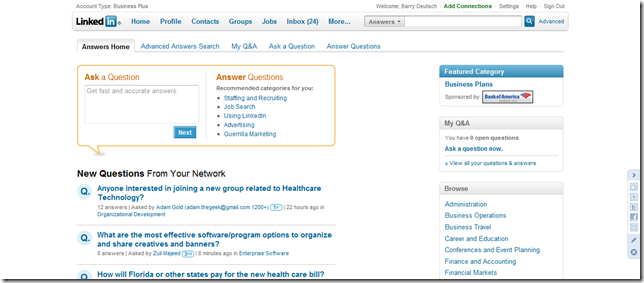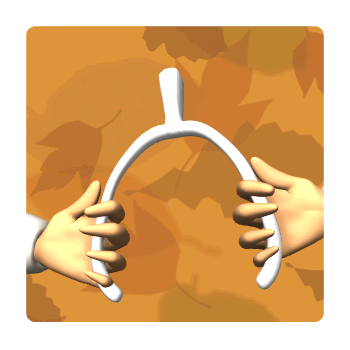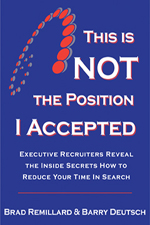Building An Effective Network Step 2 – Online Social Media & LinkedIn Profile
Step one of effective networking focused on the offline networking process. It discussed why so many candidates receive such little value from networking that most just give up. I understand why this happens and hopefully the 4 steps started to change how most candidates approach networking.
Online networking is becoming more and more an effective way to connect. I personally don’t believe it is even close to as effective as offline networking, but one has to make sure that this base is covered. Just like the offline networking that we described in Step 1, it too must be covered effectively. Just doing it for the sake of doing it will not be any more effective in your search than meeting a bunch of people and going to a lot of networking meetings just for the sake of doing it.
There are very few things one can do poorly and expect anything other than poor results. Yet, this is what many of the candidates I encounter expect given their networking process.
Online networking takes effort. It is much more than just filling in the blanks on your LinkedIn profile and then hoping a recruiter or hiring authority will see it and think, “WOW, what a great person, I need to contact them now.” I recently conducted a small poll asking approximately 500 people how they would rate their LinkedIn profile. To my surprise, most were completely honest and rated it poor to below average. A few rated it good and one or two rated it excellent. Of those that rated it good and excellent, four made the mistake of asking if I agreed and wanted my opinion. Don’t ask me for my opinion if you don’t want a complete answer. When I finished writing my assessment of their profile, all agreed that their profile needed work and was incomplete and therefore ineffective.
Here are some things to consider when building an online network and how to fully utilize it:
- Limit your expectations. LinkedIn and other social media sites are not a silver bullet for finding a job. They are definitely an important component, but don’t over rely on them. Offline networking is still at the top of the list when searching for a position.
- I cannot stress enough that you need to make sure that you not only have a complete profile on LinkedIn or Google, but also make sure it is compelling. This is your home page. Make sure it demonstrates that you are the expert in your field. Do an analysis of your competitors just like companies do. Review other profiles in your functional area. See what they have to offer. How does their profile compare to yours? If you looked at both profiles, which person would you contact first? Be objective. CLICK HERE to get a FREE checklist to building a compelling profile.
- A profile is meaningless if you still aren’t findable. What steps are you taking to make yourself findable? (Part 3 in this series). How sure are you that if my team of recruiters was searching for you that they would find you? This is what counts.
- Once they do find you, how difficult is it to connect with you? This is a major issue. Most candidates don’t understand the process LinkedIn uses to connect people. If we aren’t connected at the first level and you don’t have your contact information displayed on your profile, LinkedIn makes it difficult to connect with you. In addition, the way their system works it can take days to make contact.
- Have you Googled your name and reviewed what shows up? Most have done this. Do the results link the person Googling you back to your LinkedIn profile? This can be a problem if you have a common name. Bob Smith, Jane Jones, Mark Roberts may have hundreds of names show up. It can take a long time to find you.
Online networking is a good thing, however, it is often over relied upon by candidates. Too many candidates believe that if they build it, people will just find them. This is just not true. I wish it were, as that would sure make my job easier. You have to work your profile. You have to get it out into the marketplace.
The good news is few candidates do this. If you do, you will be the one that gets the call.
You can get our Create a Powerful LinkedIn Profile To Find a Job webinar package. This includes all of the slides and the audio recording. The audio is an hour and a half and there are more than 30 slides that will walk you through step-by-step and show you exactly how to build a compelling profile. CLICK HERE to read more.
Join our LinkedIn Job Search Networking Group. 5,300 members are there for you to connect with. CLICK HERE to join.
I welcome your thoughts and feedback.
Brad Remillard













